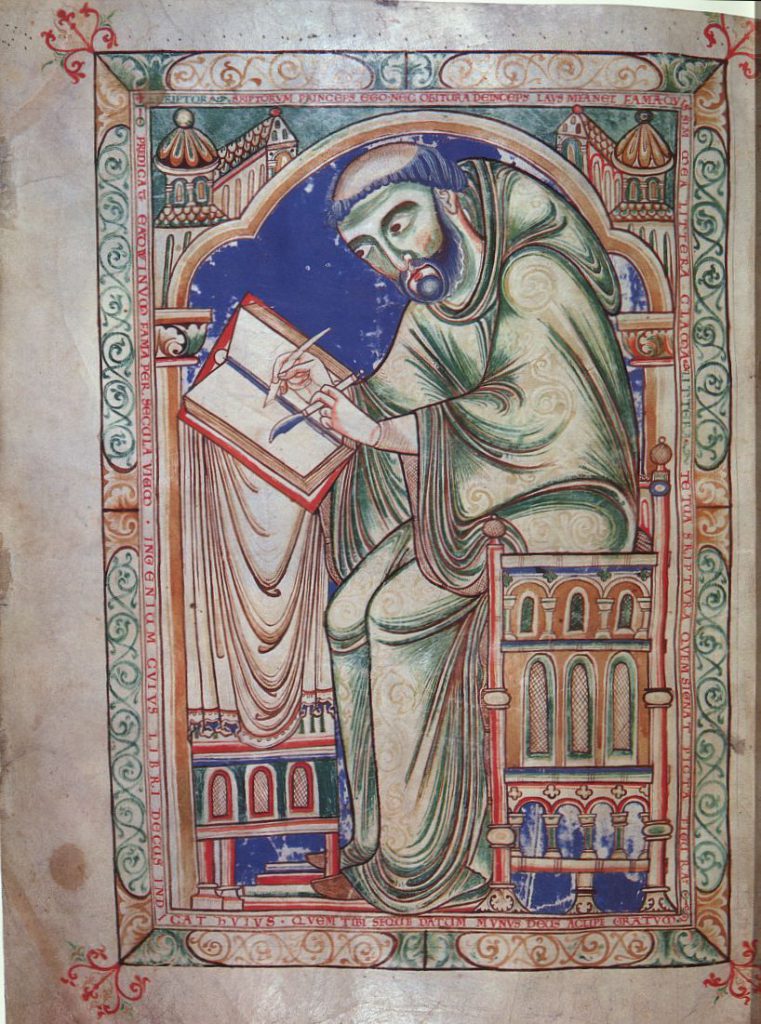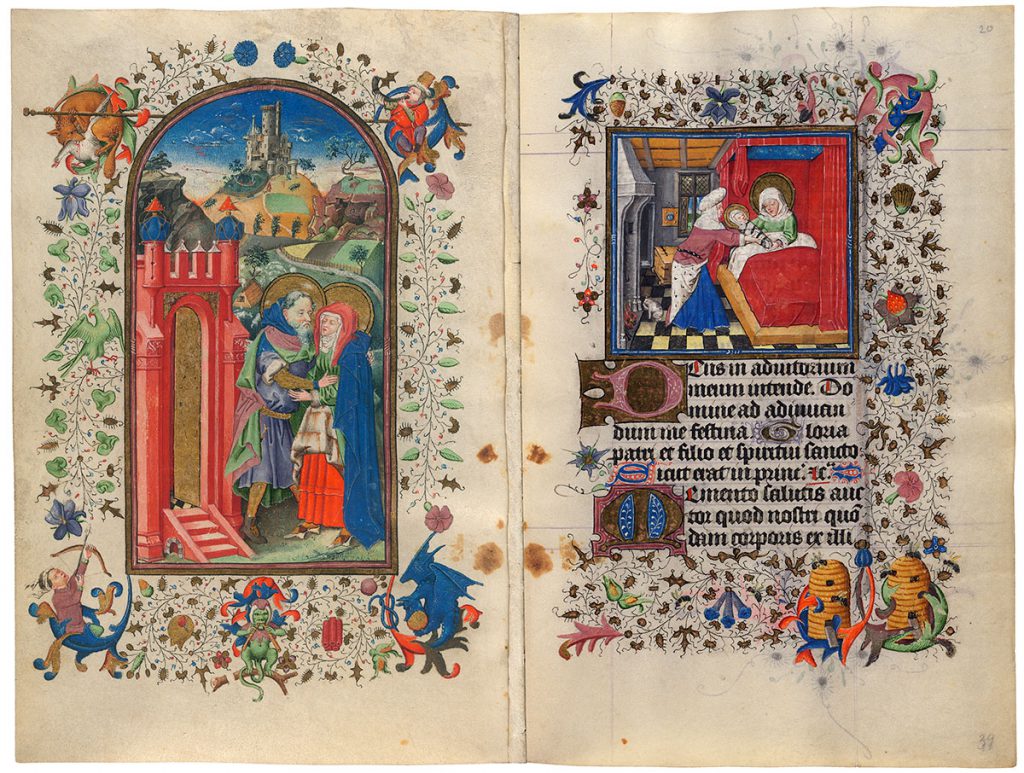Authored by Cynthia Turner Camp
The short answer is that a manuscript is anything written by hand (from the Latin manus “hand” and scriptus “writing”). In the medieval world, before the invention of moveable type by Johannes Gutenberg in the 1440s, all text was written by hand. Books, letters, legal documents: everything that we typically type today was hand-written in the Middle Ages — and many of these were still hand-written in to the early modern period.
When we talk about medieval manuscripts, however, we’re typically discussing books, all made by hand, each one distinctive, unique, and (even when messy) beautiful. Not only are no two manuscripts alike, but they are as interestingly and variously different as their individual histories.
How was a manuscript made? The best explanation is this interactive Flash video from the Fitzwilliam Museum (click through to the video), or the below video from the Getty Museum.
What these videos don’t quite capture is the number of craftsmen (and sometimes craftswomen) involved. Tanners prepared the hides; scribes prepared the parchment, made the inks, and wrote the text; illuminators prepared the paints and did the decorations; and binders bound the manuscript between covers. While it’s possible for one individual to do all this, it was more common for these different tasks to be done by a loose affiliation of professionals (particularly in larger manuscript producing areas, like Paris, Bruges, or London).
Because every book was made by hand, each was also unique; even two seemingly identical manuscripts — the second copied directly from the first by the same writer — will be different.
These differences stem from two places. The first is the natural variations that occur in handmade items. Different scribes will write in slightly different styles of scripts. The quality of the parchment will vary. The color of ink will change from one batch to the next, and different illuminators would be available for different rounds of decoration. Finally, patterns of wear (including writing in the margins and on blank leaves) would reflect the vagaries of ownership.

The second is the bespoke nature of all manuscripts. Whereas today, publishers mass produce books they think will sell well, there was practically no production of books on spec in the Middle Ages. This was because books were incredibly expensive (roughly the equivalent cost of a car today): there was no guarantee that a wealthy enough buyer would want the prefabricated text.
Rather, individuals who wanted a book had two options. They could approach a professional scribe and order the book (“I want a book with these romances and that devotional material; I can afford a few illuminations, but not many”). Or they could arrange to compile their own books by borrowing texts from friends and having local scribes copy them piecemeal into their books. While owners would sometimes copy their own manuscripts, it was more common for the job of writing to be given to a professional scribe. The art of writing was a skill separated from that of reading (unlike today, where we learn to read and write at the same time), and even those who could write professional documents, like letters or bookkeeping ledgers, would give the job of copying a manuscript to someone who could produce a clear, professional script.
Manuscripts were not simply bound collections of texts for private consumption. They were visible, public proclamations of taste, status, financial expenditure, and social aspiration. The quality of manuscripts one owned was a statement of status, much as cars are today. So a book the size of the Auchinleck Manuscript, or with the many-splendored illuminations of the Hours of Catherine of Cleves, is a way of performing social status. Similarly, the contents of a manuscript can also demonstrate something about the owner’s self-portrayal to the world. (Does he or she want to be seen as a pious person? A consumer of chivalric romances? A participant in trendy courtly culture, reading the latest Chaucerian lyrics?) Along these same lines, the illuminations of a manuscript can also proclaim ownership or kin relations (usually via heraldry). The owning of manuscripts was also, in the later Middle Ages, a way for the rising middle classes to perform their aspirant social status.

At the same time, medieval laypersons owned very few manuscripts. In the fourteenth and fifteenth centuries, we might expect the upper middle class to own fewer than ten books – and perhaps fewer than five. A library of twenty codices would have been lavish indeed. A hypothetical library might look something like this: a Book of Hours for religious devotions, perhaps another collection of saints’ lives and devotional texts, a compilation of legal and genealogical documents relating to the history of the family, a collection of French romances and poems, and a trilingual anthology of mostly secular verse and historical documents. In this hypothetical library, two of the books may have been bequeathed to the wife by her mother or aunts, one may belong to the head of the household (as the head of the extended family) rather than being a “personal” document, and only one or two may have been purchased by the current generation. The first point is that manuscripts were heirlooms more often than they were new productions. The second is that a family would have a limited collection of leisure and devotional readings for entertainment and edification on a chilly winter’s day.
A very small percentage (although no-one knows how small) of medieval manuscripts still exist today. Although this is partly due to deterioration, parchment is a longer lasting medium than modern paper, and a well-cared-for manuscript produced in 1000 will be around long after the books on our shelves have fallen to pieces. The Reformation, in England and on the Continent, was responsible for much manuscript loss, as anything with a “papist” taint (which would include almost everything written before 1500) was suspect. Wars, fires, and a general sixteenth- and seventeenth- century disregard for “that old stuff” also took its toll; many illuminated manuscripts were disfigured by collectors who cut out the pictures. Much of what is preserved is the result of antiquarian efforts in the sixteenth through eighteenth centuries, or from the manuscripts’ good luck of being kept continuously in stable libraries (like the Cambridge and Oxford university libraries). And with the increasing digitization of manuscripts, they are more broadly available now than ever before in their long and often dangerous histories.